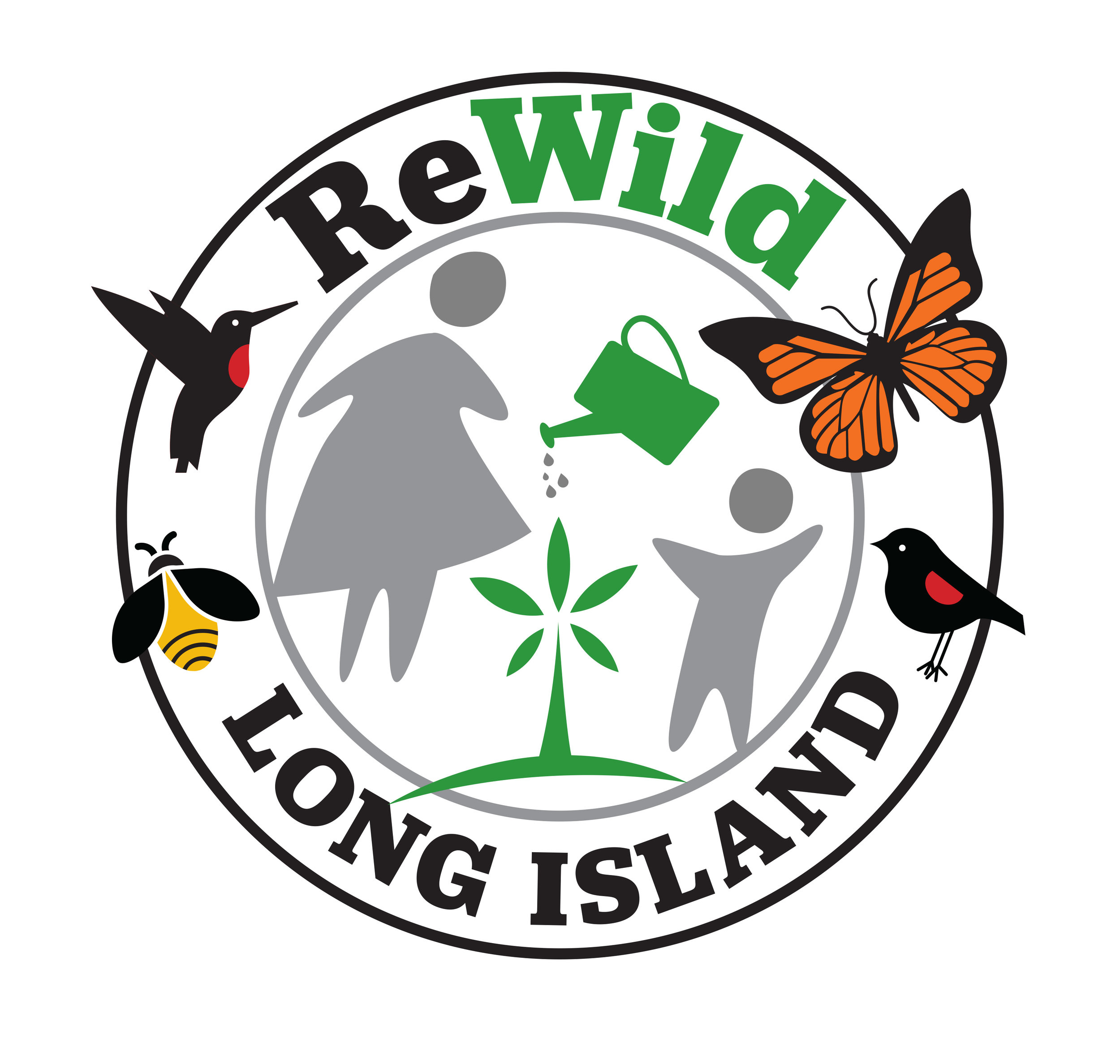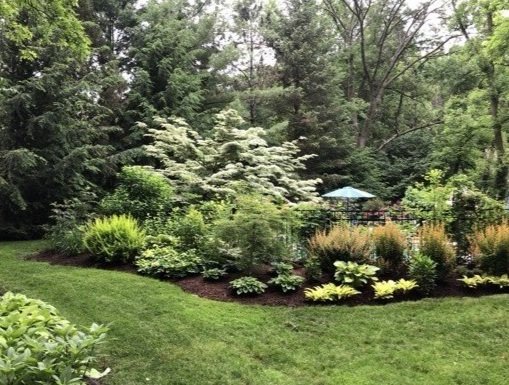Reflections on How My Garden Has Changed
By Patty Collins
Patty Collins is a retired cardiac anesthesiologist. She moved to East Hampton in January 2020 and started learning about native plants and pollinators. She stays active by volunteering for various organizations such as ReWild Long Island, Change Hampton, and Suffolk Alliance for Pollinators.
She reflects on her gardening journey from an ornamental garden in Illinois to learning about native plants and how individuals can help through small actions.
I retired from my crazy hectic life as a cardiac anesthesiologist in the busiest heart center in Illinois and moved here to East Hampton in January 2020. We purchased our first house 30 years ago with stock landscaping surrounding new construction. Within 2-3 years of the purchase, I was forced to learn about gardening to replace a dismal landscape. I paid a lot of money to landscapers who knew little more than I did before I took on the task of educating myself about plants. I worked a gazillion hours per week, so at first, I studied at the Morton Arboretum taking one course at a time earning a “Home Landscaping” certificate, but needing to know more, I enrolled at the local college and took their Horticultural classes, finally finishing one course short of the degree because I could not take the time off to complete the required internship.
All the while, I replaced (and then replaced again!!) the total landscape around our home, creating a fairy land that I couldn’t wait to return to every day after work. What I didn’t realize was I planted a sterile environment in my attempts to make my property amazingly beautiful, colorful, and easy to manage because the insects did not eat many of my plants. The environmental impact of what I had planted was not stressed in my college studies at that time. Hopefully that has changed. Moving here to East Hampton forced me to re-examine my horticultural aspirations. After the deer and voles decimated my newly planted beds, I enrolled in the Master Gardener program through Cornell Cooperative Extension and have learned the importance of planting in an environmentally friendly way. Now, I will strike up a conversation anywhere to promote native plants and pollinators.
A small flowerpot in an urban setting can help pollinators. (Patty Collins)
I was in a hospital in NYC last week with a family member getting care. I met a young nurse, maybe in her late 20's. She asked me what I was doing in retirement, and I explained that I volunteer at various organizations, like ReWild Long Island, Change Hampton, and Suffolk Alliance for Pollinators. I asked her if she had any children, and she said no and looked at me, puzzled. I told her if she did, she'd be very attuned to the plight of our bees—and not those cute bumblebees, but our native bees. Again, I got a blank face. I asked her if she likes to eat, then explained that 80% of our food requires pollination by bees, insects, birds and animals, and presently, we are experiencing an insect apocalypse. We were in a high rise in NYC, and I asked her to look outside and appreciate the lack of green space. If a native bee existed here in this cement world, where would it get food? I explained that the foraging range of a native bee was in feet, not miles like a bumblebee, often no more than 150 feet from its burrow in the ground.
Everyone could help by planting native plants, and even putting a container garden on your high-rise patio would be a help. I hope that I have made her pause and consider this simple concept of far-reaching consequences.
Awareness and education are the key to any and all changes.




